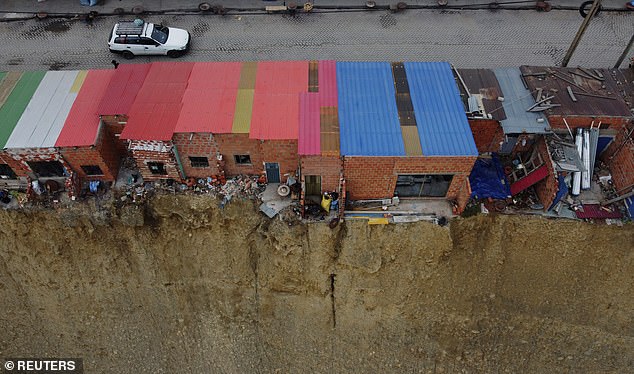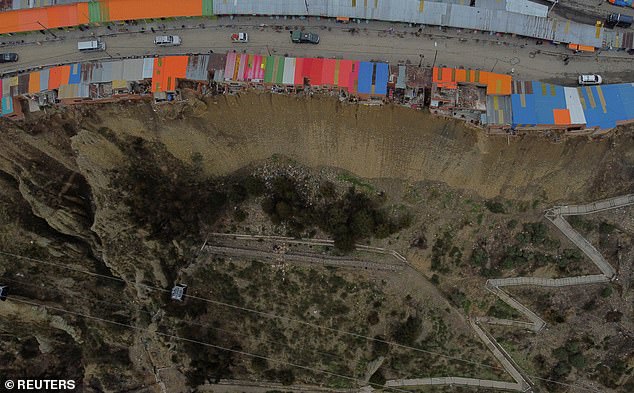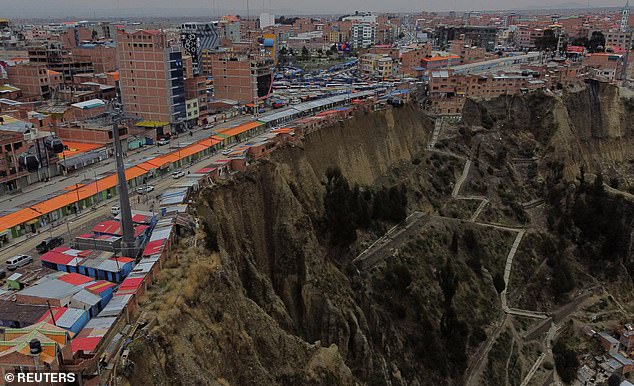In the town of El Alto, in the Bolivian highlands, the row of colorful corrugated metal roofs momentarily distracts from the terrifying sight below: a precipitous drop inches from the houses, known locally as “suicide homes” for the high risk that the inhabitants run.
The thin row of flimsy structures hangs over the edge of a cliff formed of earth with a sheer drop of hundreds of feet to the rocky escarpment below.
Experts and city officials say the cliff is eroding, making homes even more dangerous; hence his nickname.
The precarious houses often serve as workplaces for Aymara shamans, known as yatiris, where they make offerings to Pachamama, or Mother Earth.
But heavy rains and global warming are increasingly undermining building foundations.
“The cliff in this valley is 90 degrees,” said Gabriel Pari, municipal secretary of water, sanitation, environmental management and risks for the El Alto mayor’s office.
“That is precisely why we want them to leave this place; if they don’t want to leave, we will have to use force.”
The shamans, however, stand firm, even though the back doors of the ramshackle houses have only a narrow ledge before the ground falls away completely.
A view from a drone shows a row of houses, known locally as “suicide homes,” dwellings built on the edge of an earthen cliff and often serving as workplaces for Aymara shamans, in El Alto, Bolivia, on 3 December 2024.

The image shows a thin row of flimsy structures hanging from the edge of the cliff.

Experts and city officials have warned of the danger of living in cliff-side homes, but residents have decided to hold on.
‘We are not going to move from this place, because this is our daily work place,’ said yatiri Manuel Mamani, making an offering to Pachamama with a fire outside his house.
‘But we are going to take care of the soil, especially the rainwater, we are going to channel it so that the water goes somewhere else.’
El Alto, and the highland political capital La Paz, located in the valley below it, often surprises with the rugged landscape that reflects the surrounding Andean mountains. This led local authorities to build cable cars to help people get around.
And that outlook is becoming more treacherous as weather patterns become more extreme, something that has been exacerbated by climate change.
Gabriel López Chiva, another yatiri, said he trusted, however, that Pachamama would protect him.
‘We can do an offering ceremony, we do it as payment and this way the earth will never move because Pachamama needs an offering. It’s like giving food and so this place won’t move. On the contrary, it will stabilize,’ he stated.

